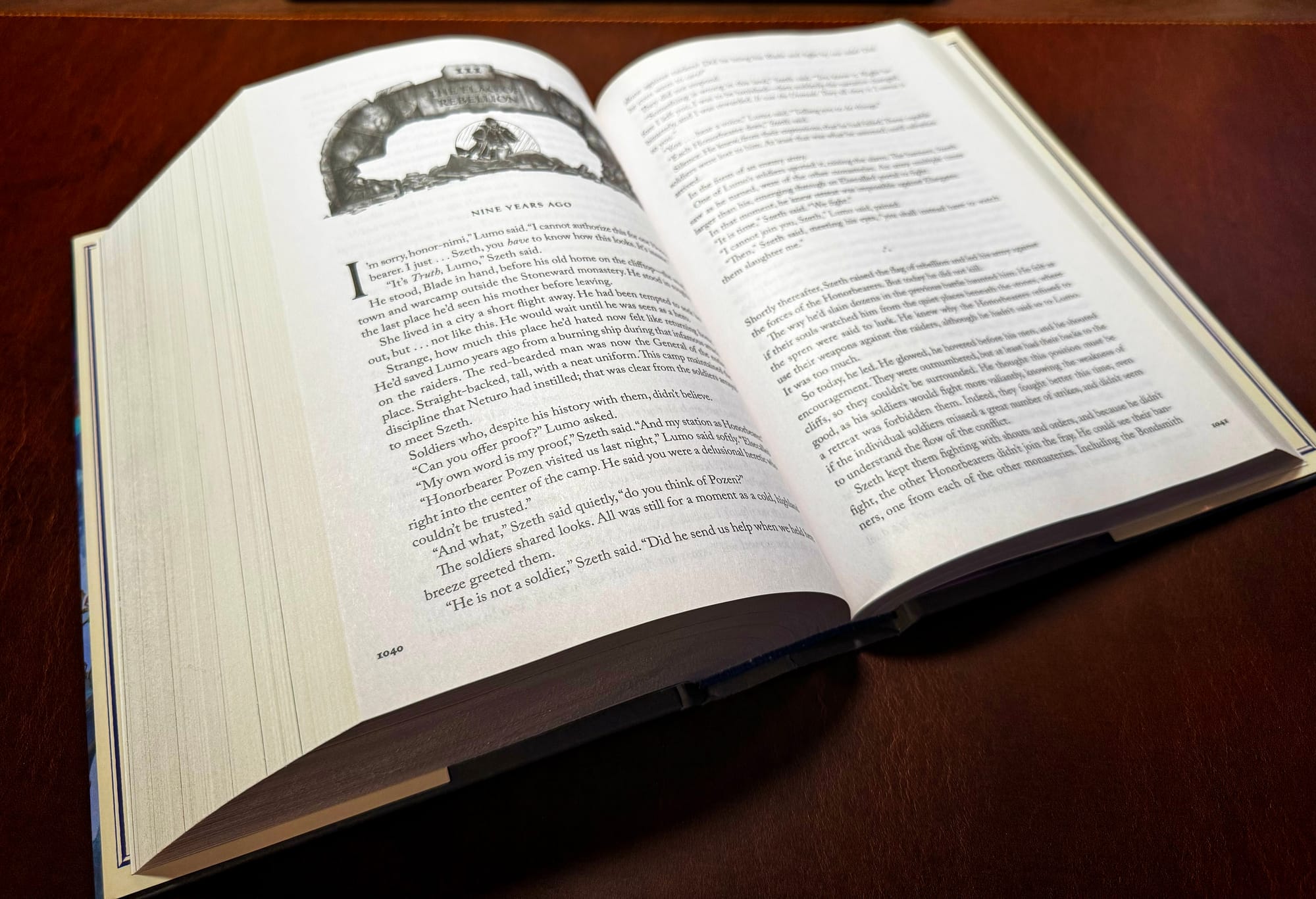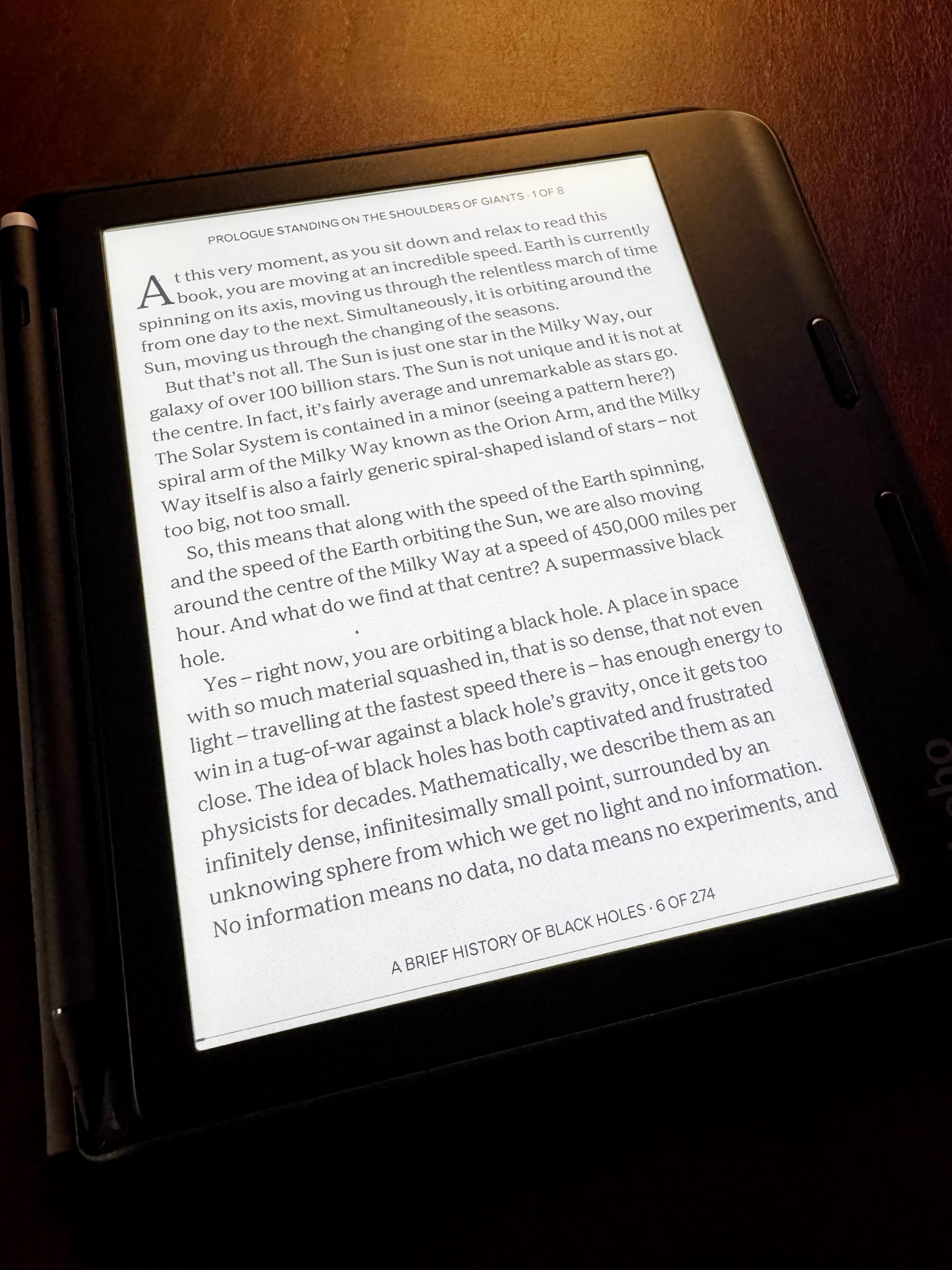The Quiet Power of E-Ink

Books are a treasure.
They have always been a passion of mine. I was that weird kid who would disappear and be far too quiet for too long. But, instead of my parents fearing what trouble I was getting into, they knew I could be found near a bookshelf.

That love continues to this day. But space and cost limit my ability to have the vast library that the bibliophile in me wants.
There are undeniable advantages to reading real, physical books over staring at a screen.
They aren't emitting light; they are reflecting it off a matte surface. Our eyes maintain a consistent focus, rather than adjusting to the glare and reflections from a screen.

Books promote a normal blinking rate, which keeps the eyes better lubricated and prevents them from drying out.
Finally, given that there is no backlight, we get a much-needed break from being blasted by blue light.
But.
Books are large.
They take up space. We need adequate light to read them, limiting when and where we can journey through their pages to uncharted lands.
And we can only have so many on us at a time.
That's just fine, most of the time.
Vacations though? If I want to read multiple books, I'd have to bring them all with me.
I rarely have room for as many books as I want to read. And I have to know beforehand exactly what I want to read next—no chance for spontaneity.
So, while I love a good, physical book, they aren't always the most practical option.
Enter technology.
Now I can have a device with hundreds, or even thousands, of books on it at all times. And it fits in my pocket.
It’s amazing when you think about it. The amount of knowledge and art we can casually carry with us boggles the mind. But it isn’t all sunshine and roses.

There are drawbacks.
These miraculous devices are bombarding our eyes with photons, drying them out, possibly causing chaos with our sleep patterns.
And worst of all, pulling our attention in a hundred different directions.
Games, social media, email, news, and a never-ending stream of videos and entertainment all await us. Too often, they don't even wait for us. They entice us, they tempt us, and call at us non-stop.
We find ourselves sucked into the stream, our good intentions washed away in a tsunami of electrons.
We can land a human on the moon; there ought to be a better option.
Like most of us, it was Amazon’s first Kindle that brought e-ink to our collective consciousness.
Sure, it had been around for some time before that. But it really was the first Kindle and Amazon’s reach that made me aware of the technology.
Initially, it seemed like a neat idea, but more of a gimmick.
That was, until I saw it in action for the first time.
E-ink is fascinating technology.[1]
But it is the consequence of how these screens work where the real benefit lies.
All the advantages of paper books? E-ink has them. Add to that their connected nature and large storage, and you have single-task devices that excel at one thing.
Displaying text.

Some can run Android apps. But even then, they limit the distractions that seem to be inherent in our phones.
This is their power.
Long-form reading is where these devices shine. Books are brilliant. On modern displays, the text is crisp and clear with excellent contrast. Gone is the eye strain. Taking in a page of text at a time becomes the ideal exercise.
Scrolling just feels wrong.
The desire to constantly jump from one task to the next is either minimized or, in the case of dedicated e-reader devices, eliminated.
We give ourselves the opportunity to experience a similar joy to that of the physical book. We immerse ourselves in the worlds and words before us. Our minds find joy in the journey. Focus is found, accompanied by a peace as we experience a reprieve from the distractions that beset us.
If it wasn't obvious, I am a fan of e-ink devices. They offer something that our traditional phones and tablets simply can't. And while those devices have their own set of advantages, if focus is the desire, they are often our worst enemy.
The nature of e-ink devices has led to an explosion of different types. Some are for reading, others are for note-taking, and some try to do much more than that, with decreasing levels of success. But at the heart of them is the same principle as with physical books.
They encourage us to fall into the words on the page and find the joy that comes with that focus.

As with most good tools, e-ink has its limitations. It is when we recognize the strengths and weaknesses of the tool that it becomes powerful in our hands.
Combine the experience of focused reading with the versatility of huge portions of our library available anytime, anywhere, and we see the truth.
E-ink is a transformative technology.
What about you? Do you use e-ink? Does it make a difference to how and where you read? If you haven't tried it, why not?
I urge you to embrace reading as part of your daily, if imperfect, practice.
- It really is! Take millions of microcapsules with positively and negatively charged particles, suspended in a liquid that, when an electric field is applied, causes either those particles to come to the surface. And then stay there until the field is changed. Apply a positive field to the microcapsule, and the negatively charged black particle comes to the surface. The opposite rule applies to the white particles. And that's it. They stay there until given a reason to change. No more electrical energy is needed until it is time to change the screen. ↩︎